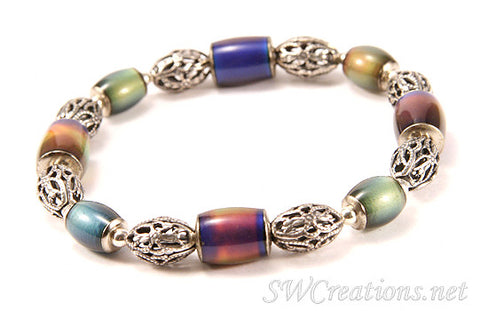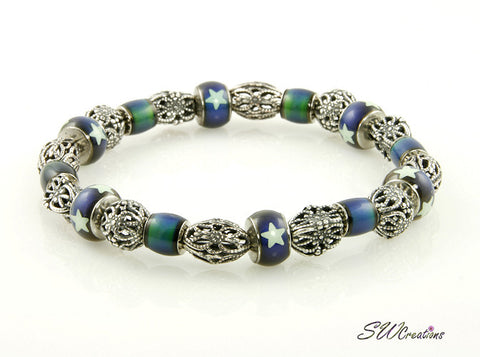Mood Beads Article - What Mood Are You
In the 1970s a new and interesting kind of jewelry became one of the biggest fads of the decade to hit the market. It was the first piece of jewelry that could supposedly tell what mood its wearer was in. This piece of jewelry was the mood ring—it was fun, it was fresh, and it was totally cool if you owned one! Today, mood jewelry comes in more than just the original form of mood rings. There are now necklaces, earrings, toe rings, and most recently, beads to become bracelets. Regardless of form, however, mood jewelry has an interesting history.

Still, others attribute the arrival of the mood ring to a man named Joshua Reynolds, who was also the inventor of the Thighmaster.
Apart from who invented it, it still works the same. The stone of the ring itself is either a hollow piece of glass filled with liquid thermotropic crystals or a clear glass stone that sits on a sheet of liquid crystals. These crystals reflect different wavelengths of light based on the body temperature of the person who is wearing it. The stone then changes color according to the body temperature.
So how can you tell the mood by a person’s body temperature? People’s body temperatures tend to vary based on what mood they are in. For example, if a person feels stressed their body temperatures often drop. If that person is wearing the mood ring, it would typically be represented by the ring changing from neutral green to black. When one is very happy, or even in love, body temperature rises, and the ring should change from neutral green to dark blue or purple.

* Brown: Anxious, nervous, fearful
* Black: Stressed, tense or feeling harried
* Grey: Extremely nervous or anxious, scared
* Amber: Slightly nervous or anxious
* Green: Neutral reading, normal, not under great stress
* Blue-green: Emotionally charged, somewhat relaxed
* Blue: Relaxed, At ease, calm, lovable
* Dark Blue/Purple: Very happy, in love, passionate, romantic
Regardless of who invented it or how accurate they are, mood jewelry is still great fun to both own and wear. It is attractive, stylish, and comes in many different forms. So why don’t you try it out for yourself, test out the accuracy—see what mood you are in! After all, that is part of the fun of owning mood jewelry.

